Aeronautica Imperialis – Arvus Lighter and Vulture Gunship
In the second wave of Aeronautica Imperialis Forge World supports the range with two new resin aircrafts, the Vulture Gunship for the Astra Militarum and the Arvus Lighter of the Imperial Navy.
These are multi-part resin (not Finecast!) kits, available only through Forge World. Each clamshell blister covers two flyers, along with the accessories needed for use in Aeronautica; flying bases, clear rod and status cards with profile. The inlay covers the assembly instructions as well.
The Vulture Gunship is armed with Punisher Cannons. In the Forge World store the shop entry shows rockets as well, but these are not included in the kit. Most likely the picture is just a mix up of a second variant, which will be released in the future. Forge World sets the RRP of the blister with two Vultures at 38 EUR.
If you have never worked with a resin kit before, it is important to take care of a few things. I have covered these in some of my other reviews, for example on World War 2 tanks, but Warhammer TV has a video explaining the handling of resin kits as well.
As resin is usually mixed and poured into a silicon mould and then left to cure in a pressure chamber, it differs from spin-cast metal / finecast or injection moulded plastic kits. The pressure part is necessary to reduce air entrapments (bubbles) within the casted parts. To ensure that the resin reached every part within the mould and the air can escape, there are casting aids added to the parts. These need to be cleaned off. It is best to use clippers to remove the larger casting aids and then a cutter to remove finer parts, to not damage the individual bits.
As the silicon moulds are often two or multi-part, mould lines as you know them from plastic kits can occur on resin parts as well. As resin is much lighter and softer than plastic or metal, usually scratching those with the back of a blade or sculpting tool will be sufficient to remove the lines.
Resin is sometimes not fully cured when it is pulled from the mould, it may warp while further cooling down. Usually a brief bath in warm or hot water will be enough to bring the piece back into shape. Giving the pieces a short bath in luke-warm soap water is recommended anyway to remove any release agent from the pieces used while casting. These residues can cause problems with the appliance of primer or paint on the resin parts.
Forge World uses 3d printers to create the masters models of newer models that are used to create a cast or mould. You can see the steps of the used technique on larger, flat pieces like the wings. As these steps are rather fine, they shouldn't be visible once primed and / or painted.
The Vulture Gunship is a variant of the Valkyrie STC, with similar hover and VTOL (Vertical Take-off Or Landing) capabilities. The Vulture is operated by a crew of two, a pilot to fly the craft and a weapons operator to aim and fire its armament. This armament is variable and can be modified to fulfil a broad variety of missions: anti-tank, infantry suppression or bombing enemy positions.
The Vulture has a nose-mounted heavy bolter and four weapon slots, two on each wing. Usually these are extra fuel tanks and twin multi-lasers, but they can be replaced with lascannons, rockets / missiles or autocannons. Or as it this case using both slots fitting punisher gatling cannons on each wing.
I have cleaned the parts from mould lines and aids, and laid them out for overview. You'll need superglue to assembly this kit and due to the small size and light weight of the parts, very small portions are necessary.
I began with assembling the parts in groups, for the example the turbine to the cockpit, the tail wings together as well as the wings. Take note that the small parts on the sides of the punisher cannon aren't casting aids and must not be removed, otherwise will create a gap as seen in the third picture (I filled it with a small strip of plastic card).
The pieces like the wings and smaller inner wings have a bit of play, so make sure these are in the right position and don't collide before the glue sets. As resin tends to shrink will curing, the fit isn't as tight as with plastic and can leave small gaps along connections. You can fill smaller gaps with a small amount of putty or liquid green stuff, if you feel the need.
The second aircraft we're going to build today is the Arvus Lighter of the Imperial Navy. These do come in pairs as well, but the RRP is much lower, they cost 20 EUR per blister. It is a multi-part resin kit as well, and covers the flying bases with clear stands and profile cards.
Arvus Lighters are small cargo shuttles, used to transfer supplies and small units. While they make sense from a narrative point, as they were used within the campaign and to drop off supplies and troops at the battlefields of Taros, they are an unexpected choice for a dog fighting game. They fulfil their role as interacting mission objectives, for example to be escorted to a certain area on the battlefield.
I have cleaned the pieces as I did with the vulture and prepared them for assembly. You can see the fine steps of the 3d print on the wings of the Arvus as well.
Assembly goes quite fast and the fit is proper. Make sure to scrape the flesh from in-between the finer parts of the wing and underside of the connection area. The exhaust pipes align with the remaining turbine on the wing; make sure to pay attention to that. The back door is glued on, technically it could be assembled open, but as the cargo bay is fully casted, there is no reason for that unless you plan on converting that area of the model.
The resin kits have the same ballpoint connection to the bases as the regular plastic kits do, so they can be angled accordingly. The Arvus is a quite compact shuttle, and you can clearly see the relation / shared components of the Valkyrie and Vulture. In 40k scale, the Vulture is a resin and plastic hybrid kit, using parts of the regular Valkyrie plastic kit and adding resin pieces to create the final build. I expected the Aeronautica kits to function similar, or maybe as the bombers with a small sprue to convert the variant.
The details on both aircrafts are well done, and the amount of them is high, especially if you keep in mind that the original designs were "shrunk" to 25% to fit the scale of Aeronautica.
Conclusion
As mentioned above, it came a bit as a surprise to see these units as a pure Forge World release. The only other side-range that is supplied or integrated in that way so far is Blood Bowl (with Adeptus Titanicus it is "only" upgrades).
The resin casting is very well done and the purity of the resin as well as the lack of air entrapments / bubbles shows a high grade of production quality. Warpage was minimal and is not that big of a problem on that scale anyway (larger kits, like the Horus Heresy Land Raider kits or similar are only suggested to expert model builders). There were traces of the 3d printing of the masters on some parts, but very fine and not as present as for example with some of the Blood Bowl codes they produce. In fact, I am quite sure that those will be barely noticeable after priming / painting.
Where the Arvus is in a reasonable price range at 20 EUR per blister, I don't really understand the pricing of the Vulture. At 38 EUR is almost twice the price of the Arvus, but not that much more work while casting (the Arvus covers 5 "sprues", the Vulture 8...). And at that price you could expect all weapon variants to be included. The shop entry at Forge World is irritating as it could suggest that the missiles are included, and to recreate the variants with rocket pods or hellfire missiles, you will need to "scavenge" the bits from the Imperial aircrafts like the Valkyrie or Thunderbolt, again something that should not be necessary at that price. But it is interesting that Forge World supplies resin models for the game, so maybe we might see things like the Sky Talon, or even a Manta.
If you have never worked with resin before, these are a quite friendly beginner kits. Make sure to give them a quick bath to remove any releasing agent, beyond that due to the light weight of the material it should be even easier to assembly than metal miniatures.
The products were manufactured by Forge World. Warhammer 40,000 and Aeronautica Imperialis are brands by Games Workshop.
The reviewed product item was provided by the manufacturer.
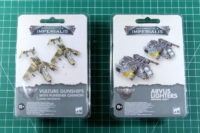
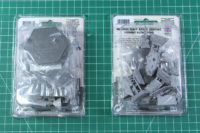
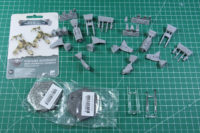
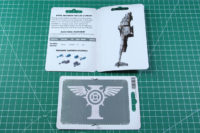
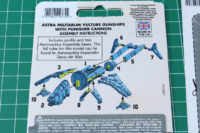
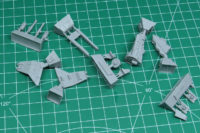
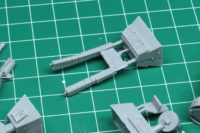
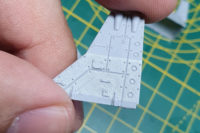
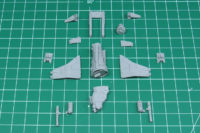
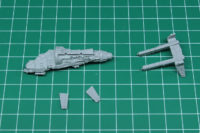

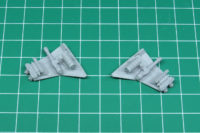
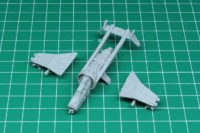
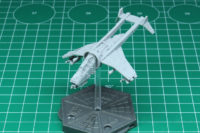
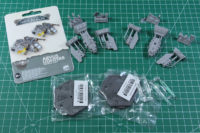
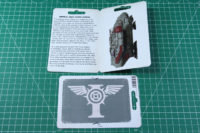
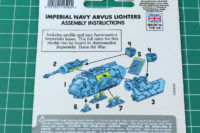
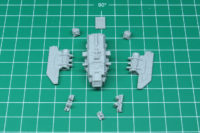
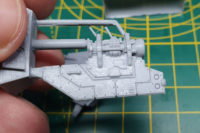
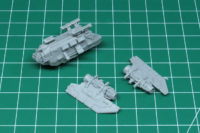
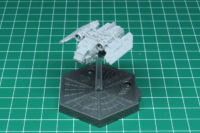
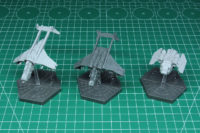
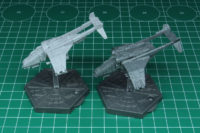
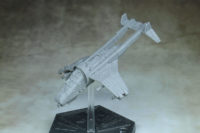
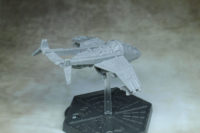
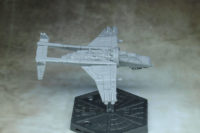
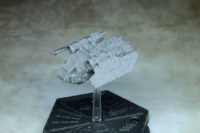
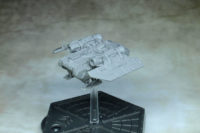
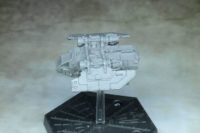












Leave a Reply